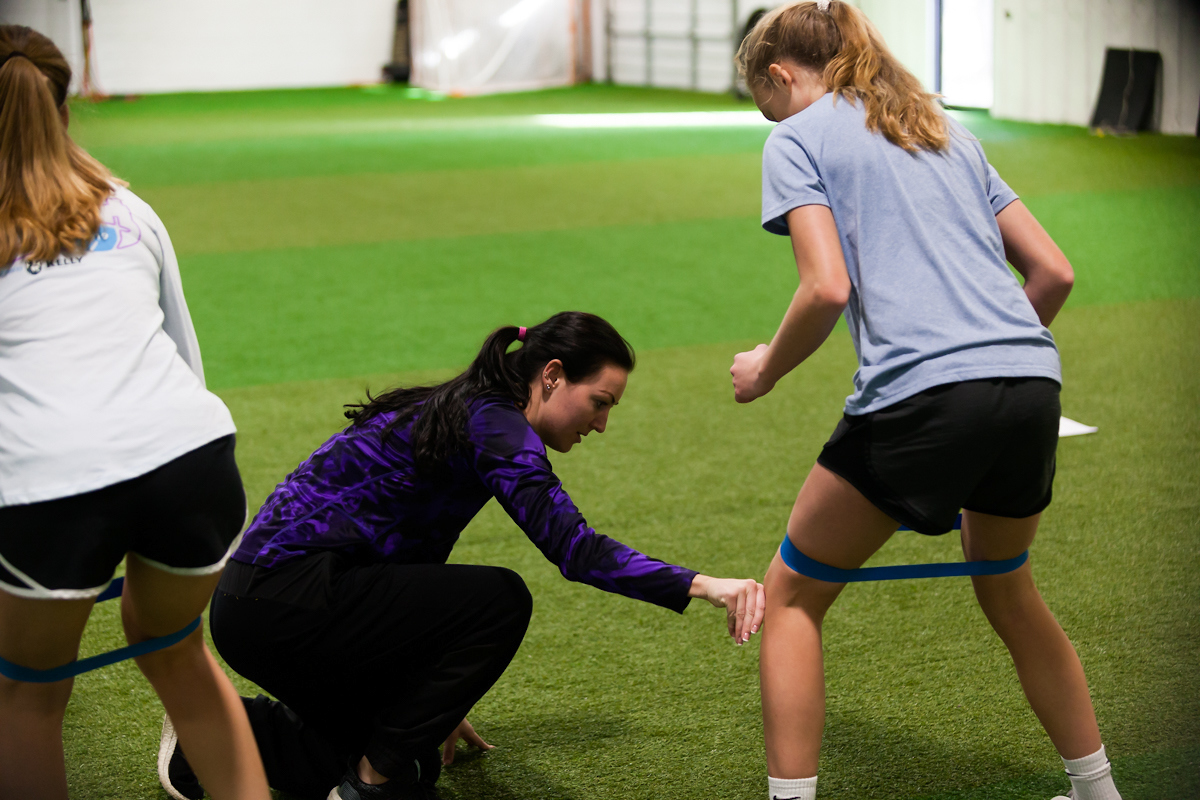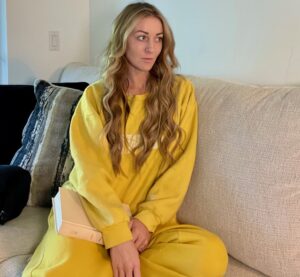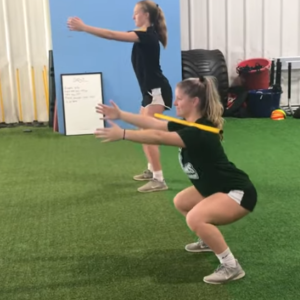
24 Mar An Injury Shouldn’t Stop Your Training
Injuries happen to all athletes.
You’d be hard pressed to find any athlete who played from childhood all the way through college who went totally unscathed. Minor injuries such as bruises, sprains, and pulls can happen even to the strongest girls. Female sports are becoming increasingly more fast-paced and aggressive. Athletes are evolving into more robust and powerful human beings.
Injuries can’t be fully prevented. They can only be mitigated.

This doesn’t mean when an athlete is injured, she plops on the sofa and stares at her phone. This isn’t a time to succumb to despair and use your sorrow as an excuse for laziness. It’s time to train at a level greater than prior to the injury.
Sadly, this message isn’t being preached in the medical community, and it’s a shame. A common scenario is a girl gets hurt and her parents take her to the doctor.
The doctor gives the big diagnosis and speaks in medical jargon. The parents then do everything the doctor suggests, which is the usual, “just rest for a couple weeks.”
What the heck does this even mean? No activity at all? Just lounge on the sofa? Just sit there and be sad about being sidelined?

This is dangerous for a couple of reasons.
First, doctors treat the symptoms, not the cause. For example, if a female athlete sprains her ankle, the doctor might attribute the injury to a weak ankle. However, what if the ankle rolled because of a weakness in the Gluteus Medius? What if the girl’s core was not stable enough to control her lower extremity? What if the girl has not even trained her muscular endurance to be able to balance on one leg for more than a minute? What if the girl did not fuel with enough carbohydrates, and her muscles fatigued in the second half, causing fault to the lower mechanics? There is always more to the story than the injured joint being at fault.
Second, the parents take the doctor’s advice of “rest for a couple weeks” as “do not move anything.” At least, this is what people assume the doctor means – to take off from all activity.
My advice: do the opposite of this. The truth is, the body heals through movement, the body continues to stay strong through movement, and the body avoids de-conditioning through movement. The human body needs to be stimulated so the muscles don’t atrophy and the bones stay strong.
The human body needs to be stimulated so the muscles don't atrophy and the bones stay strong. Click To TweetIf a girl sprains her ankle and lies defeated in her bed for her entire recovery, her muscles have not only waned in the injured area, but also the uninjured areas. Sure, her ankle may be out of commission, but she has three other limbs and a trunk to keep stimulating so she comes back stronger. And likely, it was the weakness of these other limbs that caused the ankle injury! The posterior chain – the low back, hamstrings and gluteals – as well as the anterior core – must be built up.
The injured area also needs to be moved so blood flow can get to the area, remove waste, and decrease inflammation. Even if it means moving the ankle a few millimeters, it is facilitating the healing process. Icing the injured area only helps an athlete to numb the pain. It’s not a long-term solution.
It’s worth mentioning that injured athletes must work way harder than their healthy teammates.
A girl should eventually be in beast mode and be a resilient athlete post injury, so she better be ready to put in the work.

An athlete of mine who suffered a contact ACL fluke was totally defeated the first few weeks, but then took her rehab seriously and trained harder than her teammates.
She was crushing Pull-Ups, Push-Ups, Singe Leg RDLs, and quickly gaining range of motion back in her knee just a month after surgery. She worked closely with her physical therapist and me in a collaborative effort to get her back to better condition than she was prior to injury. Beyond her physical training, she took her mental training to the next level. When she was not working with her physical therapist in the gym, she was reading, journaling, and writing down her academic goals for the year. She was finishing college applications. She was doing arts and crafts. She was walking her dog and getting more sunlight. She was cooking healthy, home-cooked meals.
Injury can be frustrating, but it can also be empowering. Girls can use it to level up in ways they never have before.
Injury can be frustrating, but it can also be empowering. Girls can use it to level up in ways they never have before. Click To TweetThe goal of injury rehab is not to go through the motions and become a drone, nor is it to become pain free. It is to become more resilient, and come back stronger both physically and mentally.
Still train when injured.
JOIN MY SIGNATURE SPEED QUEENS ONLINE TRAINING PROGRAM TO IMPROVE SPEED AND STRENGTH, BOOK A CONSULT HERE – SERIOUS INQUIRIES ONLY

GET THE STRONG FEMALE ATHLETE BOOK HERE


No Comments